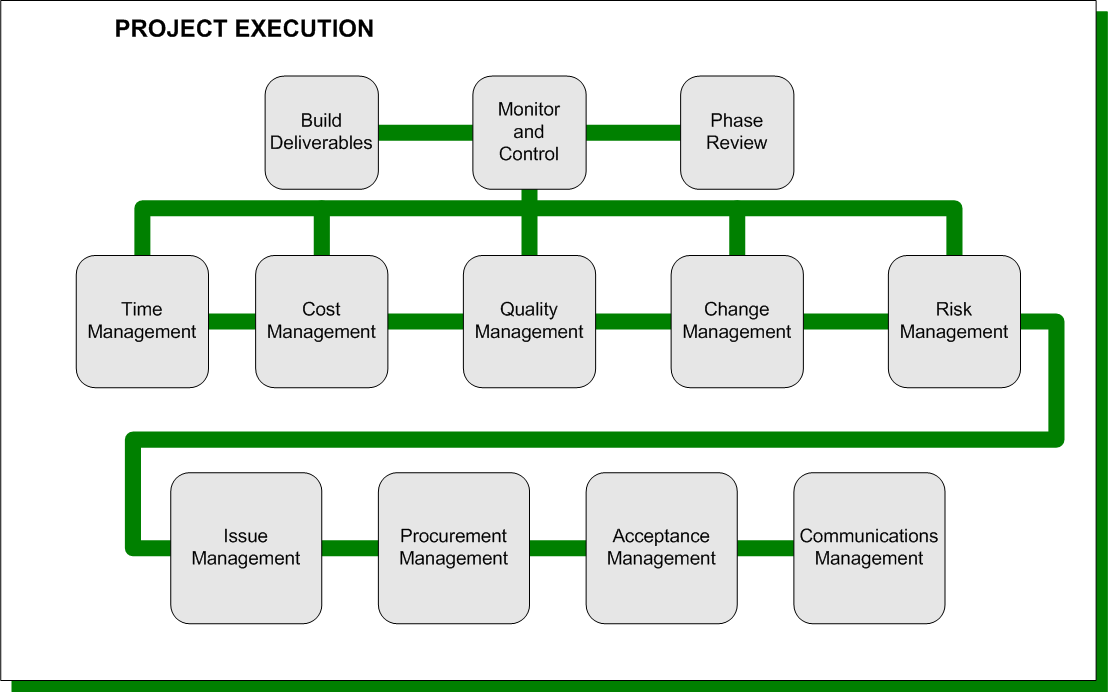This phase involves the execution of each activity and task listed in the Project Plan. While the activities and tasks are being executed, a series of management processes are undertaken to monitor and control the deliverables generated by the project.
This includes the identification of changes, risks and issues, and the review of deliverables being produced against the acceptance criteria. Once all the deliverables have been produced and the customer has accepted the final solution, the project is ready for closure.
The execution phase is typically the longest phase of the project (in terms of duration). The deliverables are physically constructed and presented to the customer for acceptance within the phase. To ensure that the customer’s requirements are met, the Project Manager monitors and controls those activities, resources and expenditures required to build each deliverable throughout the execution phase. A number of management processes are also undertaken to ensure that the project proceeds as planned.


Build Deliverables
This phase requires the physical construction of each deliverable for acceptance by the customer. The actual activities undertaken to construct each deliverable will vary, depending on the type of project (e.g. engineering, building development, computer infrastructure or business process re-engineering projects).
Deliverables may be constructed in a ‘waterfall’ fashion (where each activity is undertaken in sequence until the deliverables are finished) or an ‘iterative’ fashion (where iterations of each deliverable are constructed until the deliverable meets the requirements of the customer). Regardless of the method used to construct each deliverable, careful monitoring and control processes should be employed to ensure that the quality of the final deliverable meets the acceptance criteria set by the customer.